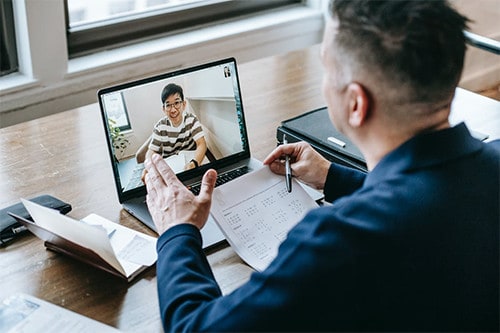With the Covid-19 pandemic reaching new heights in 2020, schoolteachers went through unlimited challenges. From hybrid learning to online settings, things turned out to be so complicated for both students and teachers. But despite these changes, one thing remained the same and that was the requirement of interpreters.
As the United States persists to become more culturally and linguistically diverse, several hundreds of parents, students and caregivers are now looking for new ways to have language support. In such remote distancing and rough times, the education sector needs to fulfil the needs of students. Moreover, the Limited English Proficiency (LEP) students should have equal rights to excel in their careers and have a strong education foundation, as per the Civil Rights Act of 1964.

Video Remote Interpreting
To have smooth online settings, schools and the education sector came up with the use of Video Remote Interpreting. But what is it? When it comes to Video Remote Interpretation, keep in mind that a fast Internet connection, modern equipment and video technology will do wonders. A highly proficient teacher or interpreter is right there to support the students’ success, whether he is working from the comfort of his home. In addition, VRI services encourage students to elevate their class performances as they can learn more and manage their time accordingly.
As such, students can take help from VRI by scheduling their days, saving their travelling time and understand more from competent interpreters or teachers. This VRI, on the other hand also benefits from the presence of subject-matter experts who can then provide language support as the interpreters connect with teachers. To communicate with staff, teachers, or students, VRI not only focuses on tying up trained interpreters but also the implementation of American Sign Language (VRI) doubles the overall success rates of students.
Interpretation in K-12 and Higher Education
With students going above more than 1.5 million in 2018, the United States aims to provide several benefits so they can stay ahead. One of these important concerns is the language barrier that often hinders their educational achievements and that’s when language interpreters are needed. From offering equal opportunities to LEP students and refugee children to learn, the Government ensures the availability of American Sign Language (ASL) interpreters especially for hard-of-hearing (DHH) or deaf students. To make things easier, VRI ensures that things go smooth for students even from remote settings.
On the other hand, K-12 students are those who moved from some other country or state to the United States – and these children are always in dire need of language support as English isn’t their primary one. With more than 4 million such students in the United States, the need for language interpreters is on a rise. Given the circumstances, students and teachers face challenges hence VRI ensures the smooth services of remote interpretation. Being the leading foreign language service, it helps to observe the facial expressions of students, provides visual support, assists the lessons, improves the accuracy of delivery, and bridges the gap between teachers and students.
Final Verdict
At Languagers, we ensure that your education heavily benefits from our Video Remote Interpreting as we bring in live videos, learning sessions and parent/teacher one-on-one conferences. With visual communication, accuracy and personal interaction are right on the point between the teachers and students. For better support, the use of apps like Webex, Skype, or Zoom assist the students in improved educational performances by working as virtual learning platforms. All thanks to Video Remote Interpreting, students can now have strong access to interpreters with relevant qualification and vast experience.


No comments:
Post a Comment